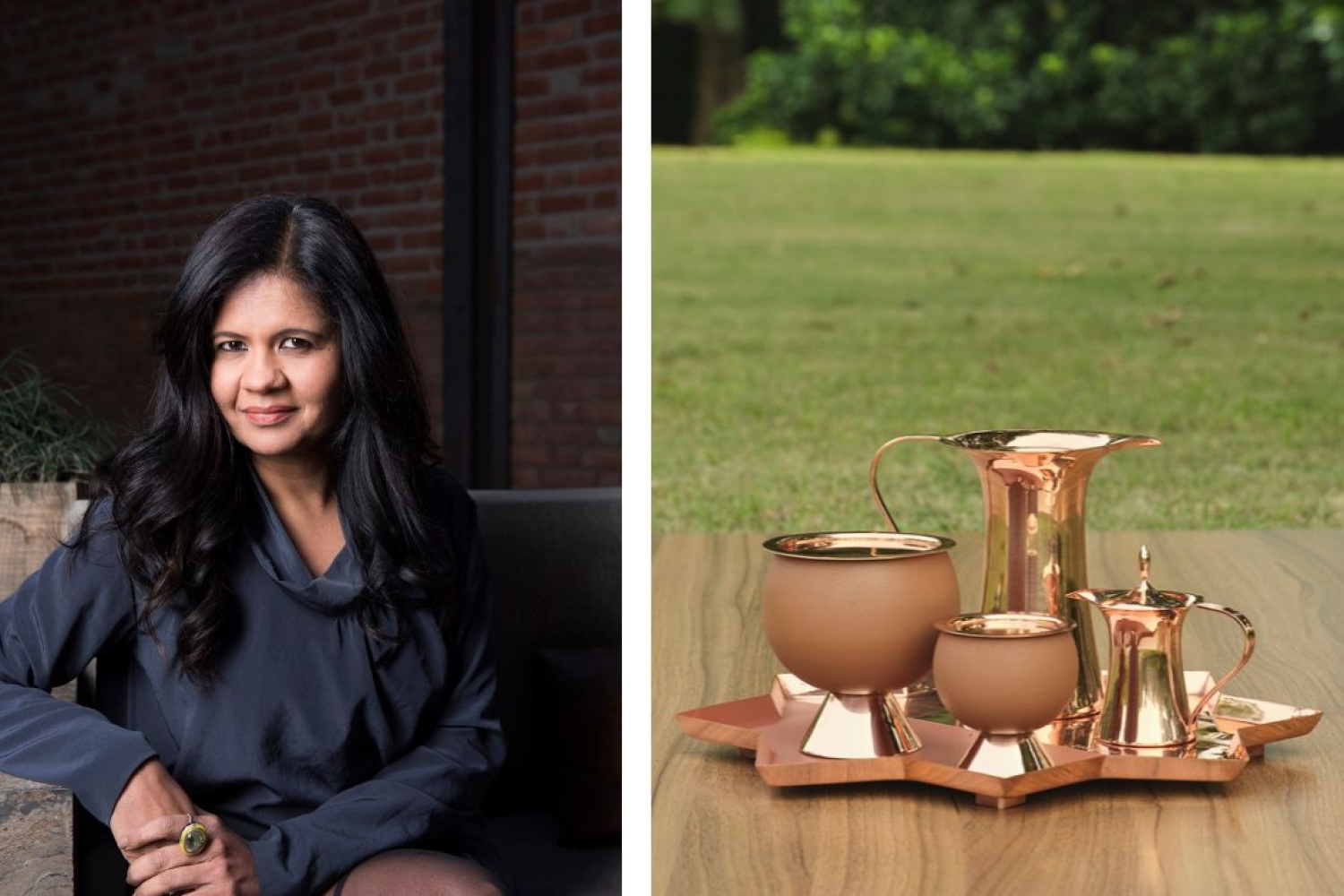

The intricately designed object, Naba Tea Tiffin, by ace product designer Gunjan Gupta, was recently awarded the prestigious AlUla Design Award at the Paris Design Week. A collection of four objects with pure copper lids coated in terracotta powder, it pays homage to the ancient city of Hegra, Saudi Arabia. Inspired by Hegra’s significance as a Hajj route station, the set elegantly combines India’s Lota container and Nabataean pottery’s beak spout. For the lesser know, design maverick Gunjan Gupta started her journey way back in 2006 with a radical collection of objects. The journey marked by a multitude of experiences and design insights that she has revisited and drawn from. With all this power of knowledge, Gunjan started Ikkis, in which she reimagines classical design practices to base them for modern times. The Naba Tea Tiffin was designed using the same learnings and principles and it has put Gunjan on the global map. We asked her five questions about the product and the design.
Can you tell us more about the inspiration behind your award-winning design, Naba Tea Tiffin, and how the cultural and historical elements of Hegra,Saudi Arabia, influenced your creative process?
The Naba Tea Tiffin is a sculptural stack of vessels comprising of a milk & sugar pot and a tea & cookie pot designed to serve Arabian tea, inspired by the legendary hospitality of the Nabatean merchants of Hegra in the AlUla. Hegra has been an ancient Hajj stop and supply station for pilgrims for centuries. Owing to their wealth and status as master merchants, the Nabateans were known to be extremely hospitable in spite of the inhospitable desert environs.
The combination of materials in your design, such as pure copper lids coated in terracotta powder, is intriguing. Can you explain the significance of these materials and how they contribute to the overall aesthetic and functionality of the tea tiffin?
Nabataean pottery is characterised by its thin walls and its finish achieved through the sintering process. Pinkish in color, the pottery is made using local clay, much like the cliffs surrounding the city. Nabataean ceramics take many forms and can be classified by their thickness, rim shape, bases, and decor. In some cases, the forms of the vessels mimic the shape of metal wares from the region that would have been used for daily use. The shapes of the containers are inspired by the iconic Lota container from India combined with an iconic feature of Nabatean pottery—the beak spout to create a unique rendition.
The terracotta coated copper combines the use of pure terracotta powder with pure copper to ensure the everyday aesthetic of clay with the slickness and luxury of copper. It is of particular interest for the depiction of Nabatean pottery, which uses thin walls and a burnished finish. Ikkis has used the colour of AlUla clay to create the Naba Tea Tiffin.
As a designer, you’ve undoubtedly encountered various design philosophies and trends. Could you share your perspective on the evolving role of design in contemporary culture?
Ikkis is a contemporary design brand inspired by classical Indian forms and rituals aimed at 21st-century living for a global audience. It is this idea of cultural reimagination that inspires me and also that Ikkis has extended to the AlUla Design Award for Cultural Retail.
What is it that currently inspires you?
I am interested in exploring the inter connectedness of design languages that connect India to the world through its historical routes. Prior to the creation of geographical boundaries, nature inspired design was common to every culture, which led to a circular design approach but it is missing today.
And lastly, what do you think is the next big thing in design?
Underrepresented aspects of design—women in design, craft from the global South, and non-Western design history and aesthetics will be some of the next big things in design.
Words Hansika Lohani
Date 21.10.2023